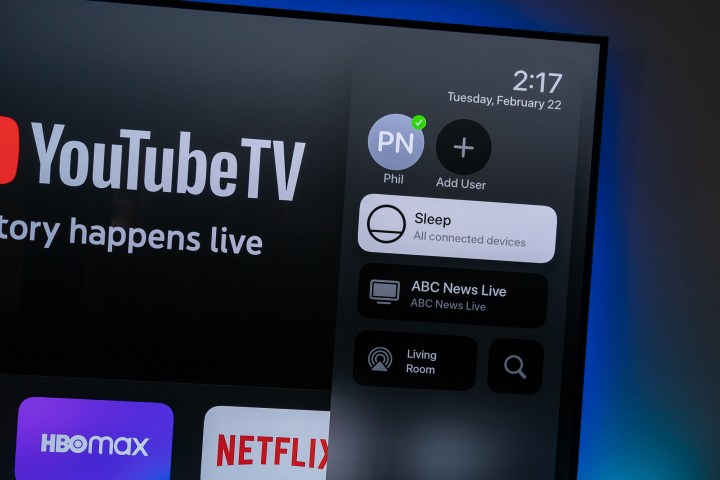Apple TV is still the best streaming device you can buy. No advertising (and thus far less tracking). Clean interface. Powerful hardware. It’s also one of the more expensive options, but you get what you pay for.
Digital Trends’ Caleb Denison does a great job breaking down all the reasons why he’s come around on Apple TV, and he’s right about every single one of them. He’s also right about the edge cases that Apple TV still doesn’t cover — and the YouTube comments are quick to pick up on that.
But there remains one feature that Apple TV — again, the hardware, not the streaming service — still lacks. It’s one that we see teased in the user interface, but not implemented in the way it should be.
A basic sleep timer. That’s it. That’s the tweet. There is no way to have Apple TV automatically shut off after a predetermined time.
(Update July 12, 2023: Apple has added a sleep timer in tvOS 17!)

At first glance, that very much seems like an oversight. After all, there’s a giant “Sleep” option in the Apple TV control center, which you open by holding the TV button. But that puts everything to sleep in the same way that holding down the power button does. Call that “Off” if you want.
And that’s all different from the “Sleep After …” option that’s buried in the settings. That one puts everything to sleep at a set interval when you’re not actually watching something (or doing anything else that Apple TV does). It’s the equivalent of your monitor turning off after the screen saver has been on for a hour.
None of those things is a sleep timer.
What we want — what Apple TV desperately needs — is a mechanism for Apple TV to turn off after a predetermined amount of time while it’s actually doing something. So that you can fall asleep to, say, Matt Damon “sciencing the shit” out of things in The Martian, without actually having to make it through all 144 minutes of the film. You have a pretty good idea that you’re going to fall asleep in the next hour, say — or maybe even half-hour, if you’re lucky. So you set the sleep timer, close your eyes, and let Mark Watney do his thing.
That’s not to say that it’s impossible to have a sleep timer shut things off when you’re using Apple TV. It’s just that you’ll have to find your television remote and dive into that user interface to make it happen. It’s almost certainly a standard function on the TV itself. Samsung has it. LG has it. TCL’s Roku TVs have it. Vizio has it.
But in addition to very much being a First World Problem, having to find another remote control and use another operating system is something that just doesn’t need to be a thing in the age of Consumer Electronics Control, which is what allows your Apple TV to control things like power and volume control.

You could argue that a sleep timer is the sort of thing that Apple wouldn’t employ because Apple wants you to actually use Apple TV as an entertainment device, not as something to help you fall asleep. That’d be a very Apple thing to do. Or maybe there’s some other reason that’s not so obvious (or obtuse).
But that doesn’t change the fact that it’s a seemingly simple feature that would help round out what still remains the best streaming device there is.



